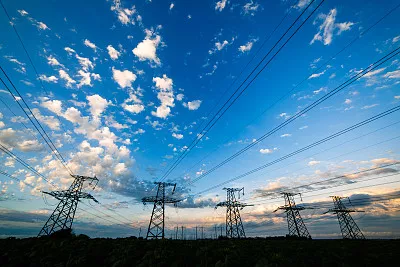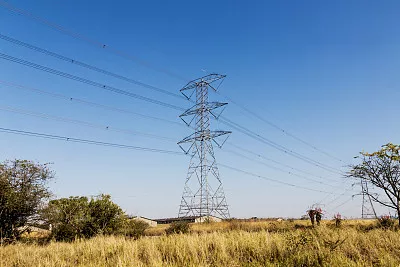- English
- Español
- Português
- русский
- Français
- 日本語
- Deutsch
- tiếng Việt
- Italiano
- Nederlands
- ภาษาไทย
- Polski
- 한국어
- Svenska
- magyar
- Malay
- বাংলা ভাষার
- Dansk
- Suomi
- हिन्दी
- Pilipino
- Türkçe
- Gaeilge
- العربية
- Indonesia
- Norsk
- تمل
- český
- ελληνικά
- український
- Javanese
- فارسی
- தமிழ்
- తెలుగు
- नेपाली
- Burmese
- български
- ລາວ
- Latine
- Қазақша
- Euskal
- Azərbaycan
- Slovenský jazyk
- Македонски
- Lietuvos
- Eesti Keel
- Română
- Slovenski
- मराठी
- Srpski језик
Brief analysis on anticorrosive scheme of steel structure of power plant in coastal area
Large thermal power plants have a large number of steel structures (such as boiler steel frame, plant steel structure, etc.) and equipment, pipelines located outdoors. The steel structure has the advantages of light structure and good comprehensive mechanical properties, but the steel exposed to the environment will be subjected to various forms of corrosion, if not protected or isolated from corrosion conditions, the steel structure will gradually be oxidized, and finally lose the ability to work. For the power plants located in coastal areas, due to the characteristics of high humidity and high temperature throughout the year, the high salt content in the atmosphere, and the local corrosion environment of the power plant such as fly ash, sulfur dioxide and steam condensation, various corrosion factors must be fully considered to design and adopt a more appropriate paint anticorrosion scheme. To achieve long-term anticorrosion, reduce the number of recoating, prolong the purpose of service life.
In this paper, a power plant under construction in southeast coastal area two millions of ultra-supercritical п type furnace steel frame as the object, introduce illustrates the current relatively mature zinc-rich coatings, hot-dip zinc, cold spraying zinc protection principle of three kinds of anticorrosion scheme, and the suitable environment, plan construction, anti-corrosion performance, sensors and actuators, the follow-up maintenance and life-cycle cost makes a comprehensive comparison between three kinds of anticorrosion scheme, Finally put forward the optimization proposal scheme.
Design principles of anti-corrosion paint for power plant
The design idea of using paint anticorrosion is generally according to the corrosion environment or medium, surface treatment conditions are different, using different components of paint coating, and according to the protection life requirements and technical and economic comparison results, determine the coating thickness of the coating. "Coatings and varnishes -- Corrosion protection of steel structure by protective paint system"), the atmospheric environment of the project site is classified as C4 class; According to the durability of paint, the design life of paint has three standards: short, medium and long term. At present, the paint design life of most thermal power plants is 10~15 years.
2. Brief analysis of the anti-corrosion scheme of the project
2.1 Classification of anti-corrosion schemes
Coating or coating is the most commonly used anticorrosion method. By coating the steel with a certain thickness of dense material, the steel and the corrosive medium or corrosive environment are separated, so as to achieve the purpose of anticorrosion. In the past, the paint used dry oil or semi-dry oil and natural resin as the main raw materials, so it is commonly called "paint". The current commonly used paint anticorrosion schemes mainly include zinc rich coating, hot dip galvanizing and cold spray zinc.
2.2 Hot dip Galvanizing Solution
Hot dip galvanizing can obtain dense and thick zinc protective layer, which has good protection performance. However, the construction process of hot dip galvanizing is strict. In the actual operation, if the technical parameters of hot dip galvanizing are not well controlled, the anti-corrosion protection life of hot dip galvanizing components will be seriously affected. Because the volume is limited and the temperature of 400 ~ 500 ℃ zinc dip plating, steel structure will produce thermal stress changes and even thermal deformation, especially for seamless steel pipe, box structure parts, etc. At the same time, hot dip galvanizing is limited by the size of the plating groove and transportation, which makes the construction of many large components very inconvenient; In addition, the process pollution is large, waste water and waste gas treatment costs are also high. When the zinc layer is consumed for about 15 years, it can not be re-galvanized, and can only be oxidized. There is no other means to ensure the service life of the steel structure.
Based on the above limitations, hot dip galvanizing is only widely used in the steel grilles of platform escalators in power plants.
2.3 Zinc-rich coating scheme
Because zinc-rich primers have good shielding function, many projects use epoxy zinc-rich paint as outdoor steel structure, auxiliary machinery and pipeline primer. The process of zinc-rich coating is generally considered as one zinc-rich epoxy primer 50 ~ 75μm, two epoxy iron intermediate paints 100 ~ 200μm, two polyurethane top paints 50 ~ 75μm, with a total dry film thickness of 200 ~ 350μm. In the high corrosive environment of power plants in coastal areas, the protection period of common coatings is short. For example, the first phase of the Guohua Ninghai Power Plant project and the first phase of the Guangdong Haimen Power Plant project, after the completion of 2 to 3 years will appear large-scale rust. Anti-corrosion maintenance has to be carried out several times during the life of the plant.
2.4 Cold zinc spraying scheme
Cold spraying zinc is by the purity higher than 99.995% by atomization extracting zinc powder, special agent of fusion of single-component products, dry film coating contains more than 96% of the pure zinc, the combination of hot dip galvanized and spraying zinc (aluminum) and zinc rich coatings, the advantages of protection principle similar to hot dip galvanized, double protection with cathodic protection and barrier protection, Compared with traditional hot dip zinc hot spray zinc has better corrosion resistance.
The oxidation rate of cold spray zinc is greatly reduced due to the low processing temperature. Cold spray construction makes thermal expansion and cold contraction hole rate is also very low, so cold spray zinc protection performance is better. Cold spray zinc surface treatment requirements are relatively low. Cold spraying zinc can not only be applied in the workshop, but also on site, without the limitation of workpiece size and shape. Cold spray zinc products do not contain any heavy metal components such as lead and chromium, and the solvent does not contain benzene, toluene, methyl ethyl ketone and other organic solvents, so it is safe and hygienic to use. Based on the above advantages, the cold zinc spraying process is widely used in the corrosion protection process of outdoor steel structure of power plants in coastal areas.
2.5 Comparison of anti-corrosion schemes
The comparison of anti-corrosion schemes commonly used in the above three thermal power plants is shown in Table 1. Taking two working conditions, then working with us, for example, the steel frame for the furnace in the power plant in the coastal area, the results obtained from consulting the anticorrosive coating manufacturer were as follows: if the zn-rich coating scheme (using "Haihong Elder" paint) was adopted, the primer 65μm, top coat 80μm and middle coat 180μm were applied, the material cost was about RMB7 million. If cold spraying zinc is used, the thickness of cold spraying zinc is 180μm (including sealing paint and top paint), the cost of domestic paint materials is about 8 million yuan, and the cost of imported paint is about 40 million yuan. Considering that the cold spraying zinc scheme can be maintained free for 15 years, the zinc-rich coating scheme needs to be repainted and repaired every 5 to 7 years, and the maintenance is more difficult. The 15-year economic benefit of the cold spraying zinc scheme is still greater than that of the zinc-rich coating scheme.
From the above analysis and comparison, it can be seen that the cold zinc spraying scheme has the advantages of long-term anticorrosion, avoiding multiple maintenance, good corrosion adaptability, convenient construction and maintenance, and low life cost. For large steel structures such as boiler steel frame, this paper recommends the cold zinc spraying anticorrosion scheme.
3 conclusion
In view of the special environmental and climatic conditions of power plants in coastal areas, it is suggested that the anti-corrosion scheme of cold zinc injection should be given priority for the steel frame of outdoor boiler and steel structure in the plant area, and the scheme of hot zinc immersion should be adopted for the grid plate of the power plant platform. It is recommended that the owner pay close attention to the price trend of cold-sprayed zinc coating, and give priority to the cold-sprayed zinc coating scheme if the cost is affordable, and only consider the zinc-rich coating scheme if the price exceeds the initial investment estimate too much.







